Studio Essentials: BLEID
The fundamentals behind the Lisbon artist's distinct style.
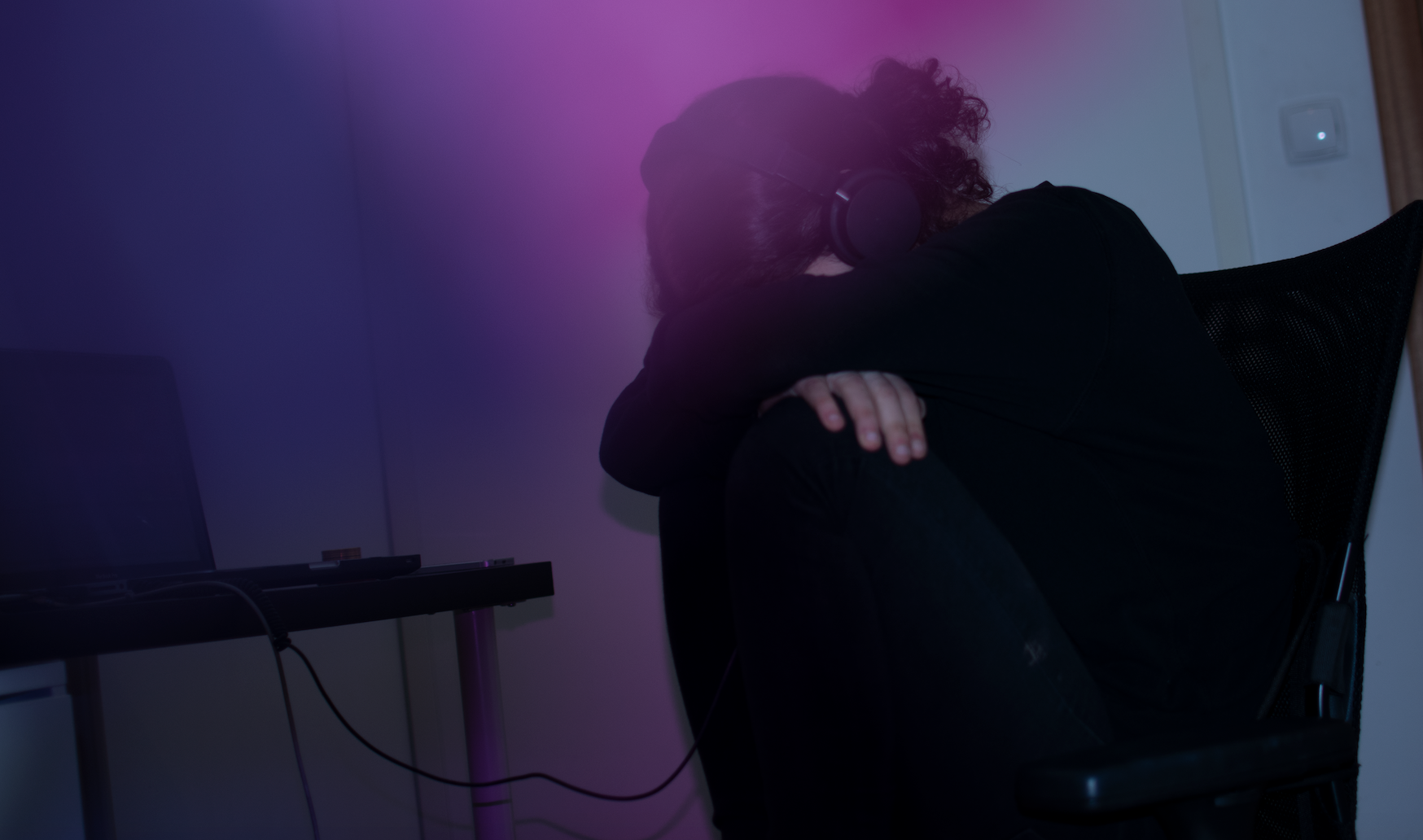
Studio Essentials: BLEID
The fundamentals behind the Lisbon artist's distinct style.
Given their adornment of a mask, it would be fair to assume that BLEID is not one for interviews, but it’s really just a vehicle to hide their identity and separate gender and age stereotypes from their music. What we do know is that they form part of a young generation of artists making Lisbon one of the most exciting places for new electronic sounds, but any one of the many features spotlighting the music in the Portuguese capital will tell you this.
BLEID, whose name remains undisclosed, found music early on, and she enjoyed an eclectic musical upbringing, ranging from Pink Floyd, Queen, and Mozart to any number of contemporary singer-songwriters, hip-hop, and punk rock.
“I grew up as a product of the internet, which always gave me the possibility to download a lot of what I wanted to hear, and also find new stuff really fast,” BLEID says. “I think I would say the thing that shaped me most was the possibility of listening to a bunch of different music growing up.” Playing guitar became their hobby of choice through school, but Ableton and electronic music soon took a hold.
The first full BLEID release came in the shape of a self-titled cassette album released in 2017, which they followed with a four-track collaboration with Violet, to whom they also contributed “sdrawkcaB,” included on Rádio Quântica’s compilation to celebrate the fourth anniversary of the much-loved platform, where BLEID also hosts their Dismantle show each month. More recently, they contributed “Ter Medo, Querer Morrer,” a previously unreleased track to XLR8R+ alongside DJ Nigga Fox, Serpente, and RS Produções, which you can download here.
BLEID’s work is all about beautiful textures and off-kilter drum patterns, and it spans ambient, broken beats, and drone, while their live sets and DJ mixes tend to be more direct and driving—as seen on their Boiler Room set, recorded at a showcase for mina, a feminist techno party where they’re installed as a resident. Next up is an EP for Ashida Park, a label based out of Vienna, Austria, and we took the opportunity ask them to tell us more about their setup.
Editors note: a version of this feature was available as part of the ‘XLR8R+018’ zine, released early this month via XLR8R+.
For me, producing music is something playful and fun at heart, and it revolves a lot around experimenting with different sources. Some of my favorite music—from other people, not mine—has been done in a rather cheap and experimental way, so that’s a language I’ve ended up embracing. Plus I really don’t believe there’s any need to spend money in order to exercise some creativity and have some fun.
For as long as I remember, I’ve been fascinated with music and I’ve been playing the guitar since I was 12. But the deeper I dug into musical creation, the more I started getting bored of it; I grew tired of the guitar’s default sound and of how many resources I needed to make the music I wanted through it.
I accidentally started making electronic music in Audacity, just experimenting around with things I had recorded with the guitar at first, and a bit later with samples I found online. It was sort of a mind-bending moment to realize that I only needed some software and a computer to do what I wanted, and I think my outlook when choosing gear has been tied to that mindset. I’ve always felt the internet is a great alternative as an endless source of “gear,” considering how expensive it is for people who want to start making music to own hardware gear and a studio.
So I guess my outlook comes mostly from this effort of trying to make the most with the least, while trying to be aware that we are living in a time when there’s a lot of easily available free or cheap resources to experiment with; there’s really no need for music creation to be as limited by access to money and equipment as it previously might have been.
When it comes to my choices of virtual gear, I’m a bit careless: I’ll often download and install / uninstall free VSTs and software just to experiment with them and see what they do. I’ve always been fascinated with the amount of things people share on the internet and I enjoy getting lost there when looking for “gear.” I don’t think I look for anything in particular, at least not consciously. For me, playing around with music software in a way is more like a form of entertainment, like watching a movie or playing a game without knowing exactly what’s going to come out of it. Often I’ll just use them to generate some sounds I end up sampling later on without thinking too much about it. For this article, I’ve specifically chosen three very different VSTs I feel I have kept coming back to.
When it comes to physical gear, those are way more careful choices, primarily because it’s more expensive and requires a commitment. What I’m looking for there are things that make it easier for me to play more complex things in live sets or make my workflow faster and more comfortable when producing at home.
Speaking more generally, I find I really enjoy producing when it’s just me, the laptop, my headphones, and maybe a simple MIDI keyboard if I’m at home. Those are my true physical studio essentials. I’ve detailed this more below.
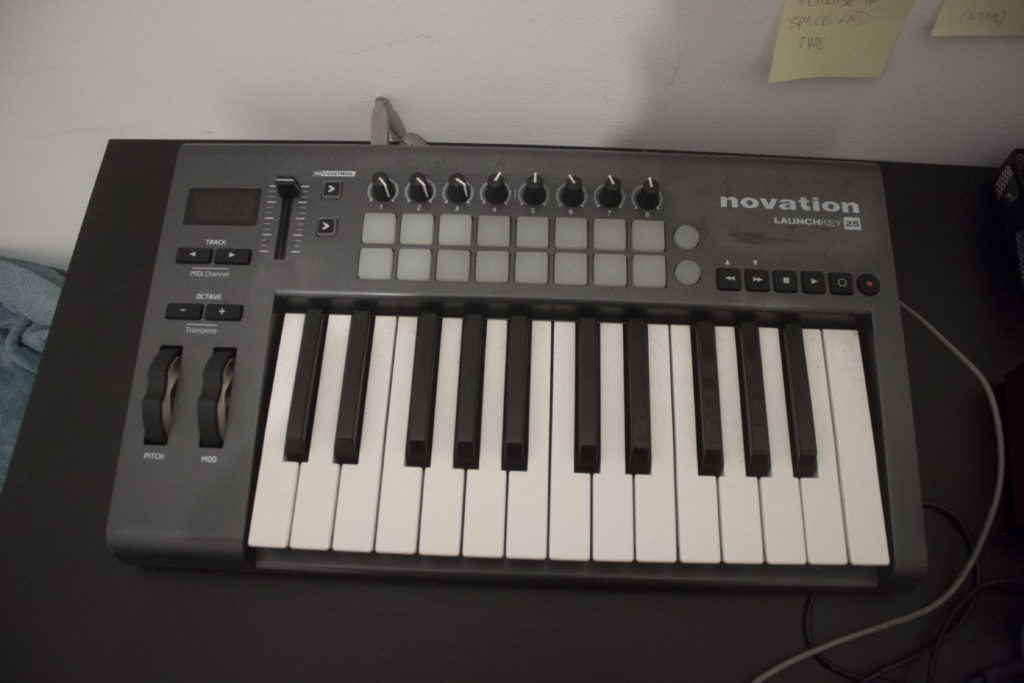
Novation Launchkey 25
This is a MIDI controller a friend lent to me a while ago when I found out he had it laying around and was never using it. I mostly use it as a keyboard to play melodies faster than I normally do when I’m writing every single MIDI note down in Ableton and then having to adjust the velocity manually. I’m pretty sure I’ll buy one with more keys because I’m getting addicted to playing it since it makes the workflow much faster, and I also miss the physicality of playing something more like an instrument.
Although I’ve never been much of a hardware person, mostly because it’s a pain to carry around and store, having a MIDI controller connected to the DAW is a nice way to speed up work, as it allows me to have a bunch of controls that are not hidden behind several mouse clicks. It makes automation easier if we’re talking about knobs and faders, and specifically with a keyboard, it allows me to have that feeling and natural speed of playing an instrument without being limited by any default sound for that particular instrument; you can make it sound however you want it to.
It also certainly impacts the sound and style of my work. Because I am more tied to my physicality when playing a keyboard, there’s always a difference between that and just clicking through MIDI clips and singularly adjusting everything. I notice my music sounds more organic and I also allow myself to keep some accidental “mistakes” that I feel sound good and don’t happen in the same way when I’m composing using just the computer.
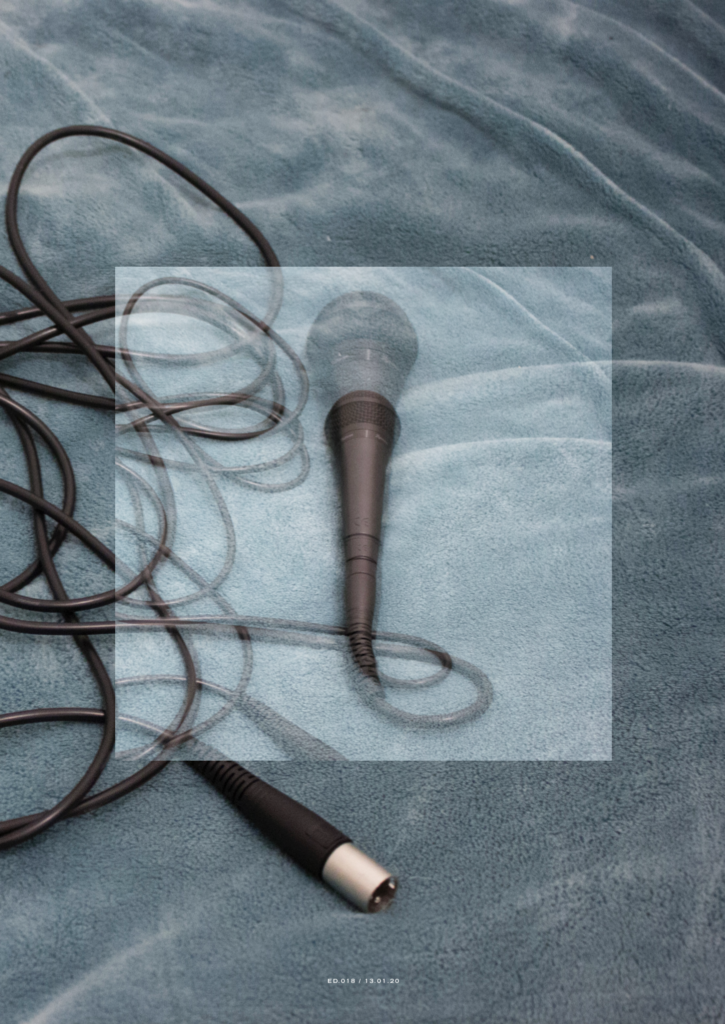
Sample Library & Shure PGA57 XLR Microphone
As I don’t really use hardware, having samples around has always been really important. Although I’ll sometimes use VST instruments, sampling gives me a much greater selection of raw sources to work with, mostly because some things you just can’t “create.” If you want the sound of the water running or a street or something like that, that will be pretty impossible to achieve through software. And by manipulating samples with effects, or by stretching those samples, reversing them, changing their tempo or pitch, that will also achieve some different results from sitting around playing an instrument based on additive or subtractive synthesis. I’ll hardly ever use a sample without changing it in some way, so that kind of ends up expanding the possibilities. What I like about music is more connected to the experience of sound itself than it is to musical notation or composition structures, so sampling in a way also allows me to explore that.
I guess most producers have their own sample library and I’ve been building mine since I started doing music. I never intended to build it really, but sampling is really present in a lot of music I listen to, so of course, when I started getting more into producing electronic music I started looking out for samples, creating some and downloading others.
I think because my passion for music eventually merged with an interest in sound and how it impacts people, my production is also tied with making music from a wide selection of different sources and with the process of expanding them.
I began doing field recordings when I was doing a postgraduate course in Sound Art, where I was experimenting with different types of microphones and also some software like CSound: that was probably the time when I was most invested in recording, creating, and generating samples. A bit later on, I also took on work in sound production for a movie doing an internship, which is a funny story because I was actually the only sound person working on the movie during its post-production despite being an intern, which basically meant a lot of unpaid hours working for an ok movie production company and for people who were profiting a lot from their “interns.” But it was fun to have access to all their equipment and their recordings and some nice sound libraries, which ended up in my hard drive!
My sample library is now quite extensive, and I don’t even think I have heard everything that’s in there. I really like to get lost in it when I’m producing and to find unexpected things, although sometimes I’ll go searching for specific sounds in the late stages of a track.
A lot of it is comprised of things from free libraries I’ve found, things people sent me, and little things I’ve recorded. There are also some YouTube rips from game voices, acapellas, nature sounds, and a bunch of really random stuff. Generally, I’ll just search for them on a web browser or on websites where you can find that content, like freesound.org or The Internet Archive. I sometimes take time to look for them, but there’s also things that come to me through friends, like some really cool drum loops Violet sent to me a few days ago, or things that I bump into when doing something unrelated on the computer. Like the other day I was digging for music to DJ with on Bandcamp but actually found some really cool sample packs!
Because of all the samples I use, a fundamental thing for me are samplers, which basically make instruments out of bits of pre-recorded sound by re-pitching them and applying the frequency intervals you have on a scale, so you can play a keyboard that’s actually some bird sound or something like that. I do that all the time, mostly with Ableton’s Sampler or Simpler and not necessarily with birds, but you get the idea! Other than that, I also like to sample tiny fractions of sound and then add effects over them, which makes them sound like something that didn’t come from its original source.
The Shure is a cheap microphone. I bought it a few months ago because I hadn’t recorded anything in a while and had been wanting to record some random sounds from objects and things like that. And it’s just useful to have a microphone at hand, I guess. The other day, Odete, a friend who is also a producer, dropped by and at some point we were doing a track and she ended up doing a rap over the beat we did. So yeah, useful!
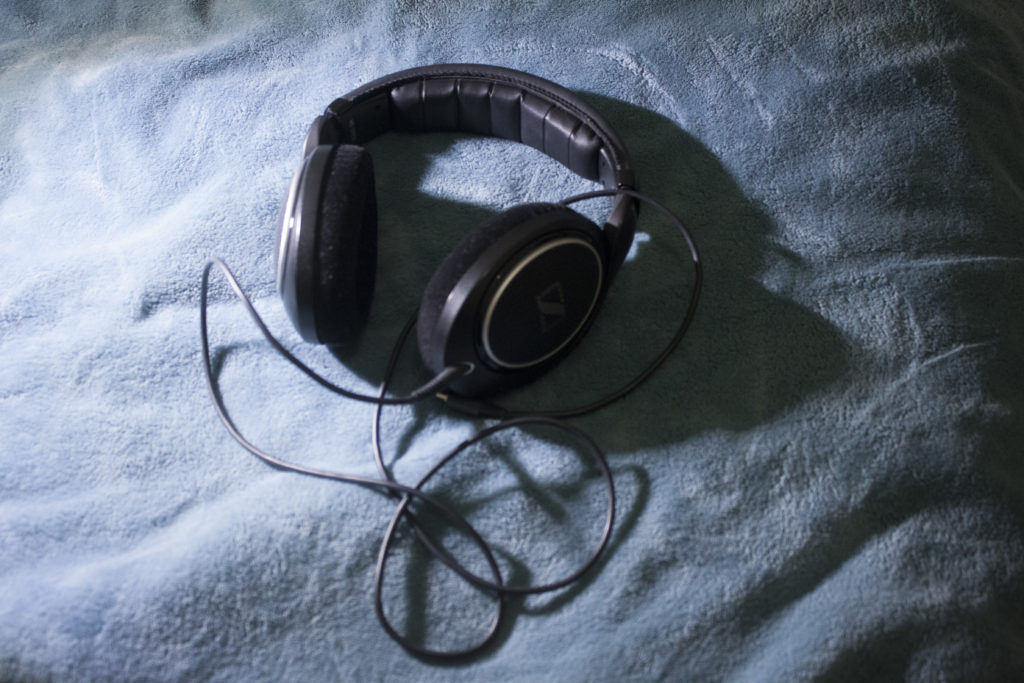
Sennheiser HD 598SE Headphones. 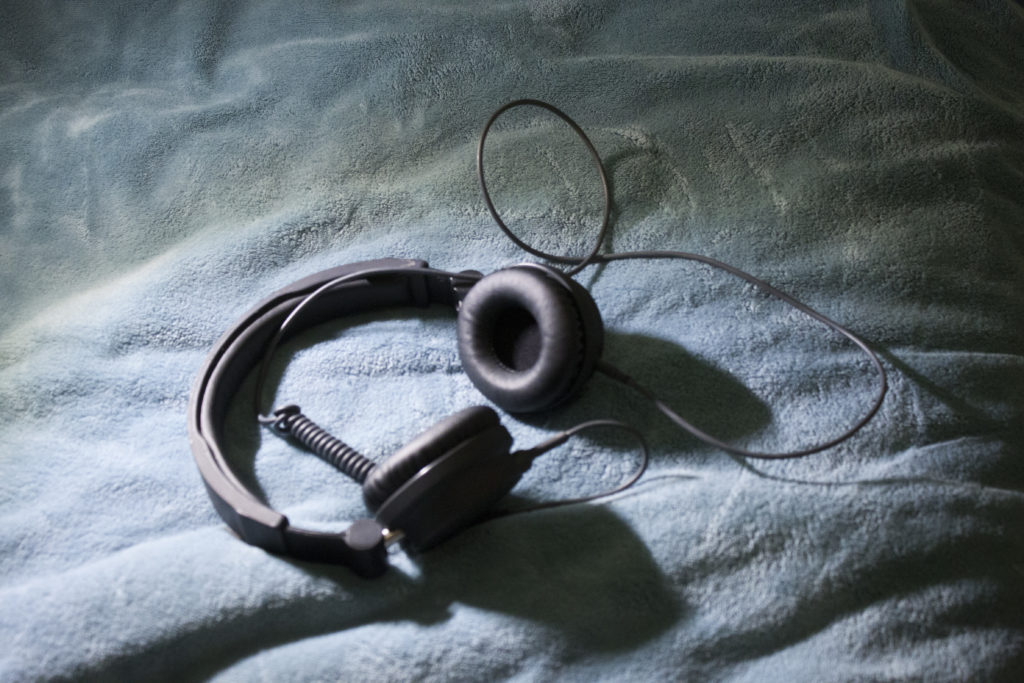
Urbanears Zinken Headphones.
Sennheiser HD 598SE + Urbanears Zinken Headphones
Headphones are pretty important for me as they allow a lot of flexibility, like doing music late at night without disturbing anyone or doing music in the middle of the day without being disturbed. I don’t really follow a specific schedule for producing as my lifestyle doesn’t really allow for it, so it’s important for me to be able to do it whenever I have the chance and feel like it. I think a loyal pair of headphones is basically a must-have if you don’t really have a studio or an appropriate working space where you can have silence and be as loud as you want to.
I use these two when producing in different circumstances. I use the Sennheiser pair when producing music I feel is not very centered on the lower frequencies. They are open back so I can’t use them all the time, but they’re really comfortable and it’s quite easy to forget you have them on. The Urbanears are the ones I use for DJing, and they’re also the ones I use for more bassy and dance-oriented things. They have a nice bass boost which can be helpful as it allows me to keep the volume lower and still have a good amount of bass coming through.
I’ve gotten really used to them both, mostly because I use them to listen to other music all the time, so it’s pretty easy to produce on both and know how most things “should” sound. I think they’re both a good compromise between price and sound quality, as neither of them is expensive but they both do their job well.
I think the most important thing when it comes to headphones is getting to know the ones you own; if you spend some time listening to professionally mixed and mastered music and learning how things should sound on whatever headphones with an ok frequency response, then that makes everything easier when producing. I haven’t found the courage to buy studio monitors yet because those will be a bigger investment and I don’t get to carry them around as easily, so these two have been great buddies!
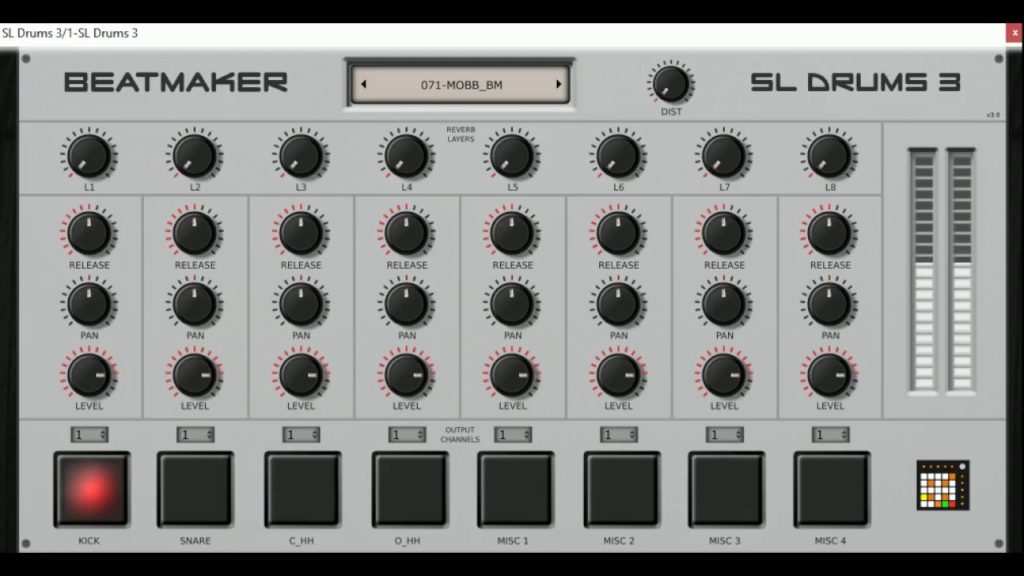
SL Drums 3
SL Drums 3 is a free drum VST I found when I started producing, and it kept me busy for quite a bit. It has a lot of cool and unusual drum sounds I find myself attracted to, and it has a lot of nice kits that are not obvious drum hits, which makes it really exciting for me. It’s basically just that, a drum VST with a bunch of different presets loaded with samples. You can’t tweak it that much inside, but it works as a pretty nice starting point for drums or other hitting sounds. I don’t think I’ve used it on any music I have out on releases, but you can hear some sounds that started off from this VST through my live set for mina’s Boiler Room.
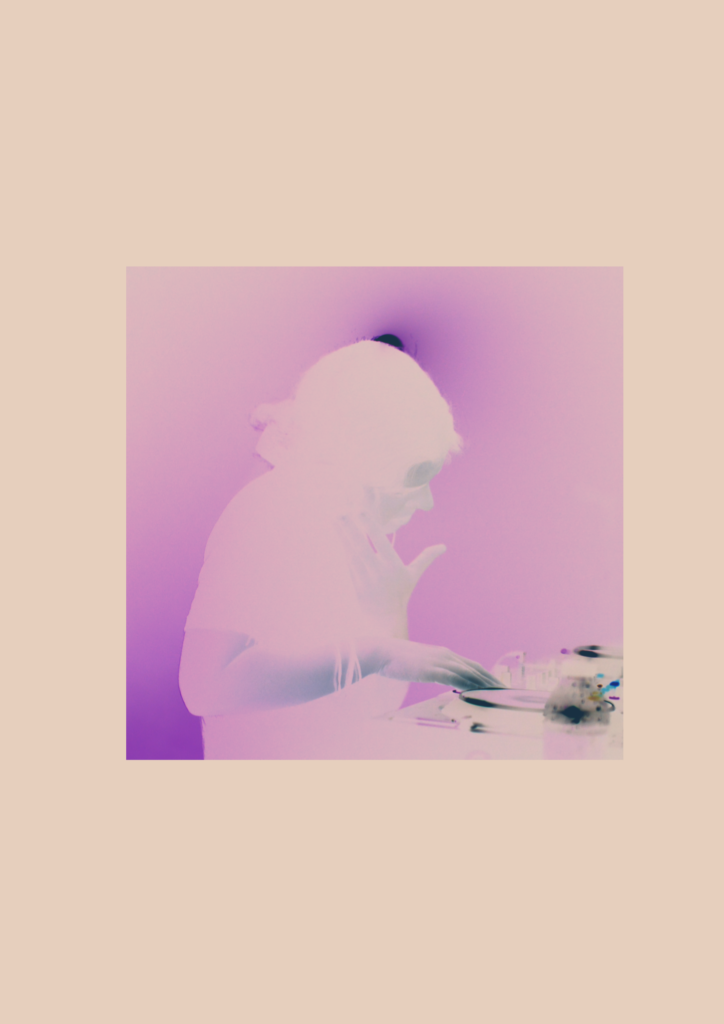
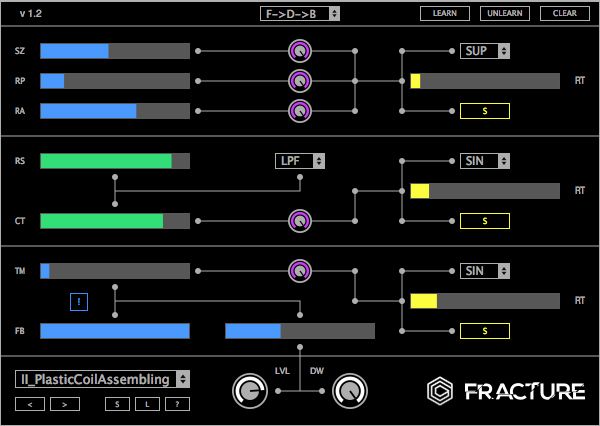
Fracture. 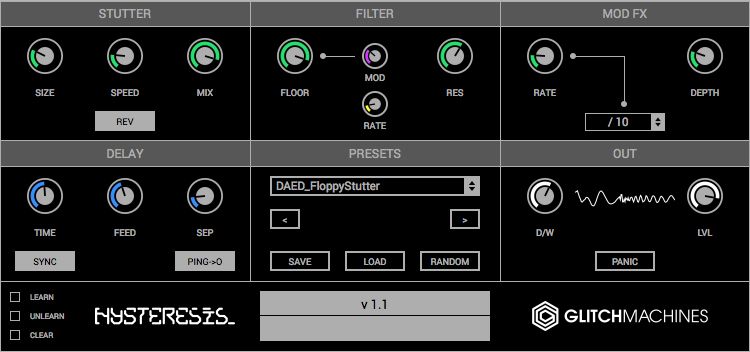
Hysteresis.
Hysteresis + Fracture
These are two free FX plugins I use often. They’re both from Glitchmachines and they are probably the first VSTs I downloaded during my first “free VSTs” Google search. They’re pretty random (and pretty amazing, like all the Glitchmachines plug-ins I’ve tried), and I generally use them when I want to add a more glitchy feel to things, which makes them particularly useful for going crazy on more noisy tracks, while they’re also good for adding some subtle texture to soft sounds. They basically combine different ways of modifying audio in one plug-in, like distortion, reverb, flanger, delay, etc., but they have a more sci-fi-ish and unexpected approach when compared to other plug-ins I’ve gotten to use. You can hear them being subtly applied to several sounds in my remix of Violet’s “Togetherness,” for example.
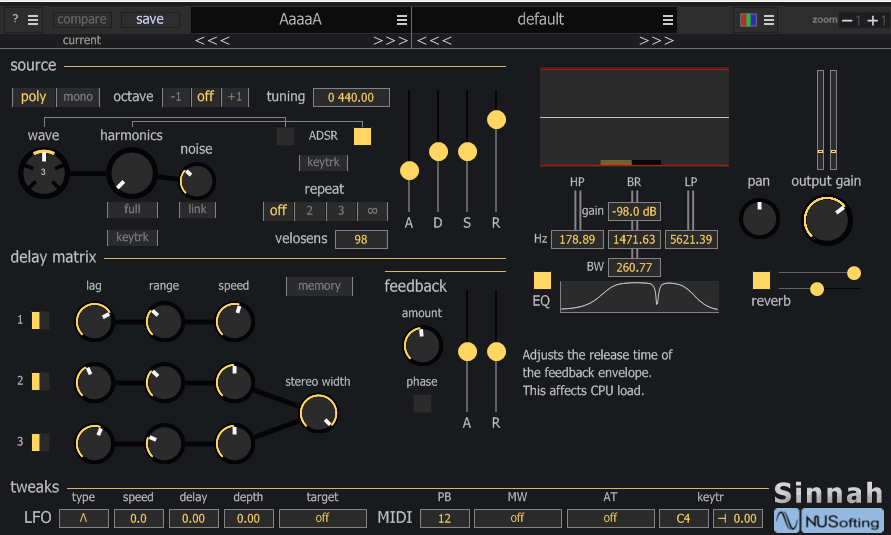
Sinnah
Sinnah is an instrument VST from NU Softing, who also have some other pretty cool options when it comes to free VSTs, like Glitch One or Noisetar. As the developers describe it, it’s a “synth based on a single complex oscillator that includes five waveshapes with increasing spectral complexity, harmonics level for all waveshapes, noise level, and a delay matrix.” I really like how unusual it sounds up front and how it has a different approach to some other VSTs that generally work by combining oscillators more than revolving around a complex one. It’s an overall fun VST to use, especially for the more ghostly spacy lush sounds. You can hear it on “Melting (Why You)” on my EP for Ashida Park, and also on the Boiler Room live set at the end.
Ableton DAW
I basically use Ableton because I also play live. A friend showed it to me when I was spending a lot of time in Audacity and I think how intuitively organised it is easily sparked my interest. Although I think all DAWs are nice and beautiful in their own way, this is just the one I ended up getting stuck on because of how easy it is to build a live set on it.
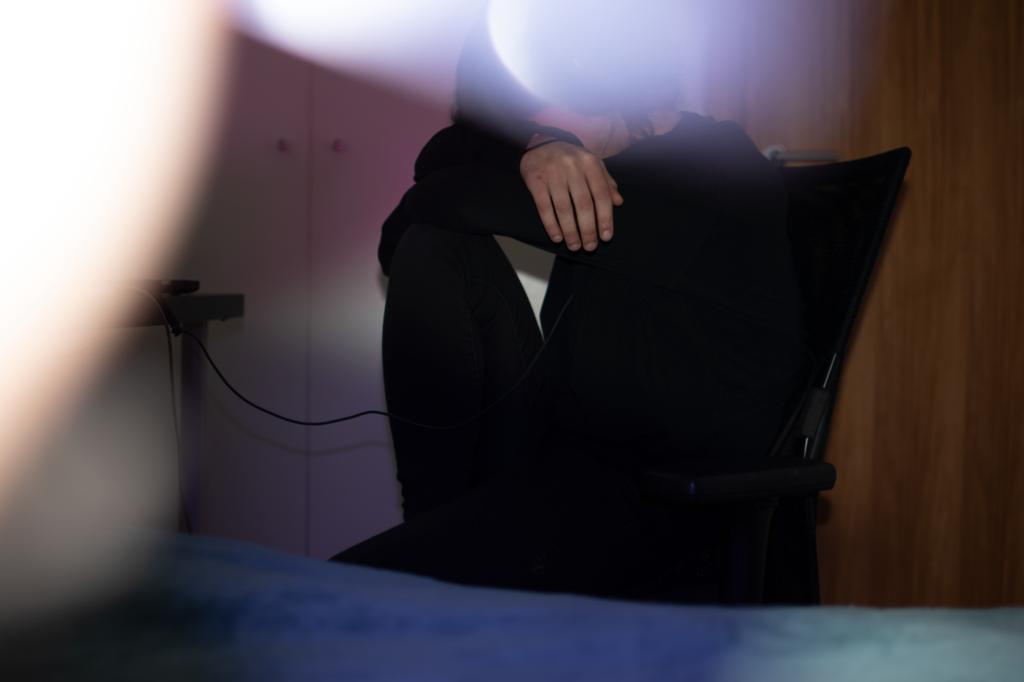
When it comes to DAWs, software, or whatever tool I’m using to make music, my conclusion is generally the same: of course the tools have influence over how things will sound, but there’s both positive and negative aspects to everything. If you think something sounds good to you, that’s the really important bit, not what you used to do it.
One of my favourite things about music and art in general is that there’s really no universal good or bad, right or wrong way to do anything; even our opinions over it change constantly. There’s a lot of music I dislike, but there’s also a lot of music that changed my life that I know other people can’t stand. And there’s also a lot of music I didn’t like the first time I listened to it but then it grew on me. And then, of course there are things I used to listen to on repeat that these days have me thinking how I ever listened to it.
So I also like to remind myself that even what is judged as something that sounds bad or is a limitation or a mistake might also be what gives us the possibility to reach innovative results—remember that famous Brian Eno quote about how a medium’s limitations can become its signature? I think having a desire to experiment and to learn while creating, without fearing breaking conventions or sounding “bad” or “wrong,” are the things that feel really essential to my production, more than any piece of gear I’ve used so far.

